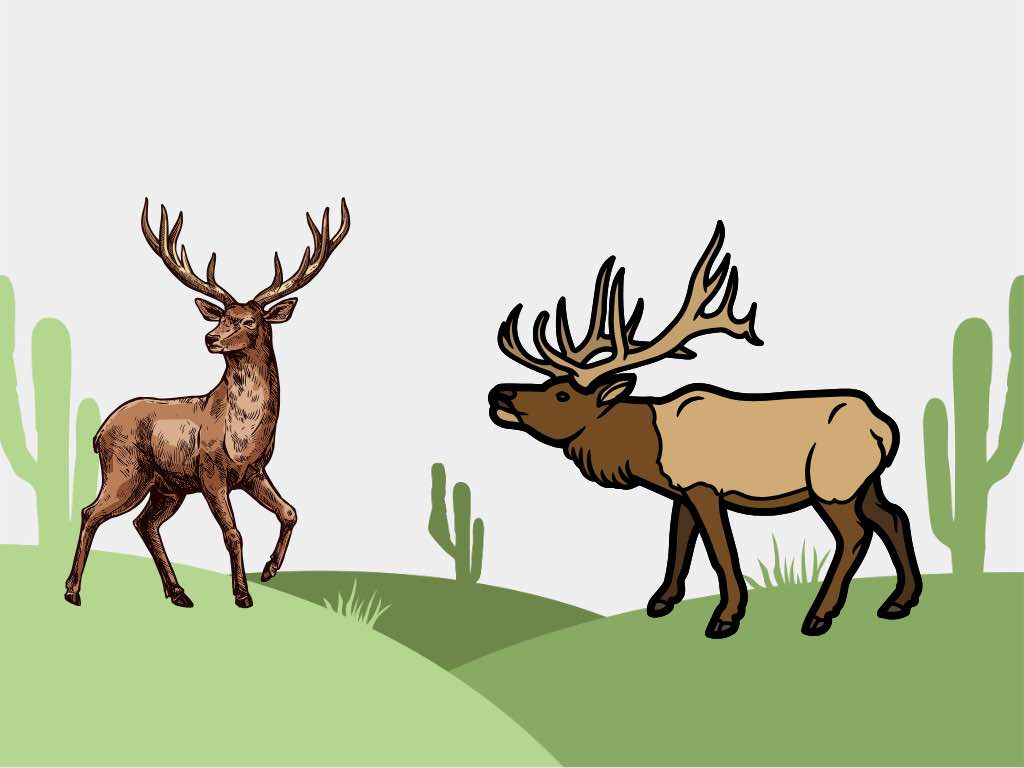
Red Stag vs. Elk Meat: The Ultimate Comparison for Game Meat
|
|
Time to read 4 min
Welcome to One Stop Halal!
Written by: Najma A.
|
|
Time to read 4 min
For the game meat enthusiast, choosing between red stag and elk meat can be like deciding between a pair of gourmet delicacies: both have distinct qualities and can elevate a meal to something memorable. But which one is right for you? In this blog, we’ll break down red stag vs elk meat, helping you understand everything from flavor profiles and nutritional content to sustainable sourcing and culinary uses.
The red stag, also known as the European red deer, is native to Europe and parts of Asia but has been introduced to North America. It’s a robust animal, slightly smaller than an elk, and is often valued for its lean meat and refined flavor.
Elk are native to North America and are one of the largest members of the deer family. Due to their larger size and natural diet, which is usually high in grasses and shrubs, they tend to have more pronounced muscles and a slightly richer flavor profile.
Red stag meat is often described as mild yet rich, with earthy undertones that make it palatable even for those new to-game meats. Its lean texture offers a smooth and refined taste, similar to venison but slightly sweeter.
Elk meat is often considered more intense than the red stag, though still less gamey than other types of wild game. The flavor can be beefy with a hint of wildness, which pairs well with herbs and spices.
Known for its leanness, red stag meat is low in fat and calories. It’s high in protein and containse essential vitamins like B12 and iron. It is also a Low-fat diet.
Elk meat is similarly low in fat but tends to have slightly higher protein content than red stag. It’s also rich in iron, vitamin B12, and omega-3 fatty acids, making it a nutrient-dense option for athletes or those with active lifestyles.
Both meats are excellent choices for those looking to incorporate lean, nutrient-rich proteins into their diets, but elk might offer a bit more protein and healthy fats.
With a slightly finer grain than elk, red stag meat benefits from quicker cooking methods. Grilling, pan-searing, or using quick-roasting techniques highlight its delicate texture.
The coarser grain of elk meat holds up well to longer cooking times, making it ideal for slow-cooked stews, roasts, or even smoked preparations. Marinating elk meat can help tenderize and infuse it with added flavors, bringing out its natural richness.
Red stag is perfect for dishes where the meat is the centerpiece due to its subtle flavor. A red stag steak with a berry can bring out its slight sweetness. It also works well in lean sausages and gourmet burgers.
Elk meat shines in hearty, rustic dishes. From slow-cooked stews with root vegetables to grilled wild elk steaks served with smoky or spicy sauces, elk’s robust flavor is best complemented by bold, earthy ingredients.
Sourced mainly from Europe and specific farms in North America, the red stag is typically found through specialty meat suppliers. Look for red stag that’s pasture-raised and ethically sourced for the best quality.
Elk is more readily available in North America than red stag, with options ranging from farm-raised to wild-harvested. Wild elk meat typically has a more intense flavor, so check with the supplier if you prefer wild or farmed meat.
Overall, red stag and elk offer options for those looking for sustainably sourced meat with an ethical footprint. However, elk might be more accessible in North America due to its larger native population.
Welcome to the Home of Elk Meat. We carry various elk meat cuts that are hard to find elsewhere. We deliver to your doorstep anywhere in the United States within 1-2 business days.
Red stag is an excellent introduction to game meats if you’re new to them and looking for a mild, approachable flavor. Its tender, slightly sweet profile pairs well with various sauces and sides, making it versatile for home cooks.
Elk meat is the go-to choice for a more robust, beefier flavor. Its intense, hearty taste can hold its own in stews and slow-cooked dishes, providing a more “wild” experience for those who enjoy traditional game meat.

© 2025 One Stop Halal, Inc.